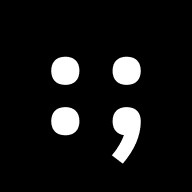Neat metaphor and the citations are much appreciated.
I feel like a bit of nuance is lost in this explanation of its initial rise:
It originally persuaded people to consent to this by allowing them to send text to each other over the Internet, something that was already possible, and combining an easy-to-learn UI with successful marketing. It then expanded to include features such as voice and video calls.
It seems like there was something rather unique about being able to make free calls, perhaps especially in (Eastern?) Europe and around the less developed world, with encryption as a bonus. Perhaps other options in the list you provided were viable and marketing played an important role, but I think something about WA made it a killer app.
I’m curious what others have to say.
Author here; thanks for the feedback. I just updated that section to address this. Diff.
I can’t believe I forgot about free calls; my parents and extended family depended on that for international calls. VOIP services were already a thing, but I’m not sure how many of them were both gratis and better for user freedom than WA.
Ping @copacetic@lemmy.ml
(F1rst P0st!)
This is what i remember as well. Free SMS and then free calls was the pitch.
I think the killer feature for most people was simply that anyone whose number you had in your phone’s address book would, without any further configuration, become available as a WhatsApp contact if they, too, had installed the app. That made it usable even by people so unfamiliar with technology that the concept of creating an account was foreign to them. No password, no username, just your phone’s address book and the app, that’s it. Open IM technologies at the time like XMPP didn’t have this (at least to my knowledge), and even today, while Matrix has this feature via identity servers, it takes manual effort to set it up (as it should be, though it could be streamlined somewhat in Element AFAICT).
FWIW, this is also a feature in Signal, another closed platform I covered.
This is a very well-written post, and it’s sad, because the same thing is going to happen with it as with all the other well-written take-downs of proprietary, siloed, platforms: the people who /need/ to read it aren’t /going/ to read it, and WhatsApp (slash Facebook, slash Twitter, slash Instagram, slash Signal, slash …) is still going to be used by a huge portion of the population.
Maybe I just feel really cynical today. I do think that “user domestication” is a great metaphor for what happens. I guess what I’m saying is: fighting against this kind of corporate behavior feels about as effective as fighting against factory farming by going vegetarian. Like, sure, it helps, but the machine is /so big/. It’s hard to feel like we’re doing anything.
Sad to say it may have been the uploading of contacts (clever WhatsApp) that just made it easy for users to find each other and no when new contacts joined up. The free calls etc was available on other service slike XMPP (many modern messengers grew out of using XMPP underneath).
Sad part is just that it was not only about capturing all our contacts but actually exposing privacy in this way. But from the FB and WhatsApp perspective it was gold as they knew psychologically that “connecting” would lure people in.
Yes XMPP has one service that I posted about in the XMPP community here, where anyone can register with their phone number (separate from your day to day account) and then you will be alerted if your contacts join AND sign up at that same service. Well it is a bit of a privacy issue and also relies on them all signing up there. So probably not very effective.
Do you mean Quicksy, the Conversations spin-off? I can see its appeal, but personally I’m not keen on the concept. While convenient, it’s a privacy issue as you point out. It’s one of the reasons why I’ve abandoned Signal in favour of XMPP. As with WhatsApp (deleted a year and a half ago), I found myself being contacted by people I don’t necessarily want to have in my chat network, simply because they got notified I’m now on Signal too.
It completely removes any form of control over who’s in your network. You could have a valid reason for having your boss’s mobile number in your phone, but you wouldn’t necessarily want to be contactable by your boss on your private chat account. Or what about the evil ex, whose number you keep in your phone so that you can block it? You don’t want to advertize to them that you’re now on Signal/WhatsApp/Quicksy! Sure, you can block them in your chat app too, but you don’t want your ex or boss to know that you’re on the same network in the first place.
As for XMPP, Snikket offers a nice take on it. It is essentially a packaged, ready to run XMPP server (including Let’s Encrypt support) with a couple of really nice innovations that make it much easier to join a Snikket server.
The first one is easy onboarding. It’s an invitation only based system that provides a link to the Snikket app (currently Android via Google Play only, iOS will follow soon, and steps to achieve the same with F-Droid have been initiated), following installation the user will automagically be taken to the app and prompted to enter a username. A secure password has already been generated, although a custom password can be set if so desired. Pick an avatar, and you’re in.
The second innovation to note is the concept of circles. Circles are essentially admin generated groups. The admin then adds members to the circle, and all members will automically have the other members’ JIDs added to their roster. All members will also be added to an MUC of the same name as the circle so group chats are immediately available without any additional steps for the users. An example: the admin creates a circle called ‘Family’ and adds all his family members to this circle. Upon login, each member of the ‘Family’ circle will find the JIDs for all family members prepopulated in their roster; no need to manually add each person’s JID. They will also have an MUC called ‘Family’ available to them without having to do anything.
Snikket is primarily aimed at people who already know one another, and would want to have each other as contacts on Snikket. People who don’t necessarily know one another, or for other privacy reasons need to be kept separate, can be added to different circles. For example, the server admin may want to offer his Snikket server to his family, his gaming friends, and his cycling friends, where these three groups do not overlap. The admin would create three circles: ‘Family’, ‘Gaming Buddies’, and ‘Cycle Friends’. Each group will have all members listed in their roster, but none of the people from the other circles. And if necessary, a person can be made a member of more than one circle simultaneously.
Also, as Snikket is ultimately based on XMPP (it’s running Prosody under the hood), members of unconnected circles can still manually exchange JIDs and add one another to their roster, including users on other XMPP servers, whether Snikket or otherwise. MUCs can be created independently of circles (which are only availabe to the admin), and can be made private or public. And of course there is full support for OMEMO.
I believe these innovations deal with some of the (perceived) shortcomings of XMPP. It provides an extremely easy way to join the XMPP ecosystem, without the complications of having to install and configure a full blown XMPP server such as Prosody or ejabberd. Of course with simplicity come limitations, e.g. you can only use Snikket with one domain, no additional modules can be added, etc., but for Snikket’s target audience (families, groups of friends, small communities such as sports clubs or interest groups) that is not an issue.
The official Snikket for Android app is a fork of Conversations, and Snikket for iOS is a fork of Siskin IM (currently in beta). Both apps closely follow upstream.
I’ve been running my own Snikket server from home on a Raspberry Pi 4 since February this year, and now have around 20 users spread all over the world on it. The easy onboarding process, as well as not having to manually swap JIDs, have been real winners here and massively helped adoption by my friends and family, most of whom are not technical at all.
@Aerion@lemmy.ml yes I was referring to Quicksy. Many only have friends onboarding 6 months or a year later and I’m not sure what other ways there are to be notified, unless they can search by e-mail address or phone number. As undesirable as that is for privacy, that is pretty well much how the Facebooks, WhatsApps, yes Signal, etc hook up acquaintances with each other.
So whilst great we do not have to reveal phone numbers and mail addresses to XMPP and similar networks, you tend to find it difficult to hook up with your wide circle of acquaintances. So I have a good 700 or 900 contacts on my phone itself for colleagues, clients, business associates etc over the years… but I have no easy way of finding them, or them finding me, on XMPP, RetroShare, IRC, and other places where I am.
So for me it was very much about how you find, and can be found, your friends later on. But I suspect by the very nature of XMPP etc this is not part of the intended functions.
Thanks I’ll go look at Snikket.







